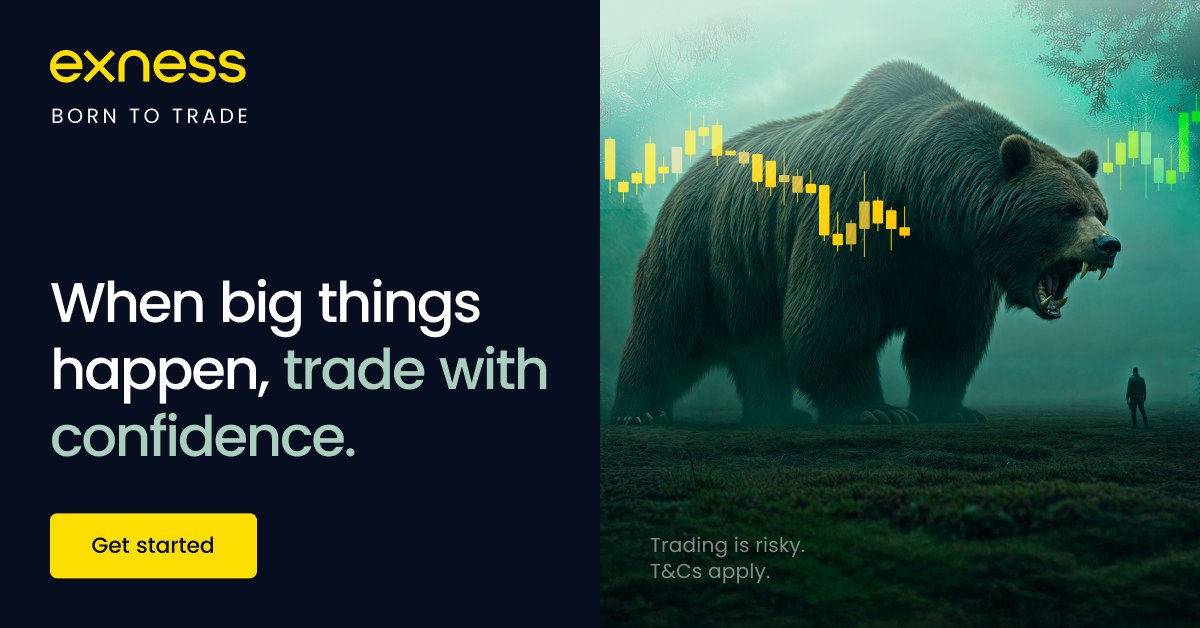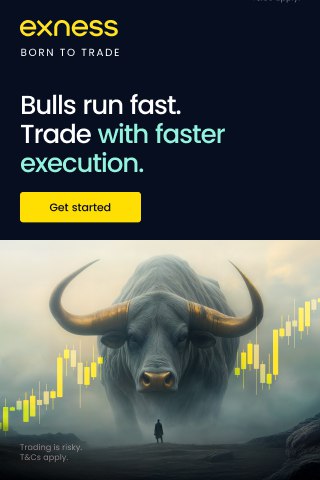
7 minute read
How to Trade Forex on EXNESS For Beginners
Trading Forex on Exness can be a rewarding venture, especially for beginners, as the platform provides a user-friendly interface and a range of educational tools. To get started, it’s important to follow a structured approach and understand the basic steps involved in Forex trading on Exness. This guide will walk you through the process step by step.
Step 1: Open an Account with Exness
Start Exness Trade: Open Exness Account and Visit site

The first step to trading Forex on Exness is to open an account. Here’s how you can do it:
Visit the Exness Website: Go to the official Exness website and click on the "Sign Up" or "Open Account" button.
Fill in Your Personal Information: Enter your name, email, phone number, and country of residence. Be sure to provide accurate details.
Verify Your Identity: To comply with regulatory standards, Exness requires you to verify your identity. Upload a government-issued ID and proof of address (such as a utility bill or bank statement).
Choose Exness Account Type: Select the account type that suits your needs. For beginners, the Standard Account is often recommended as it offers low spreads and no commission fees. You can also choose a Cent Account if you prefer to start with smaller trades.
Set Your Trading Preferences: Choose your preferred base currency (e.g., USD, EUR, INR) and set up other preferences, such as leverage and trading platform.
Fund Your Account: After verification, fund your account using one of the many available deposit methods, such as bank transfer, credit card, Skrill, or Neteller. Exness allows multiple payment options, including cryptocurrency deposits.
How to Trade Crypto on EXNESS For Beginners
How to Trade Gold on EXNESS For Beginners
How to Use EXNESS Trading App for beginners
Step 2: Download the Exness Trading Platform
Exness offers several platforms for trading, including MetaTrader 4 (MT4), MetaTrader 5 (MT5), and the Exness Web Terminal. For beginners, MetaTrader 4 is one of the most popular platforms due to its simplicity.
Start Exness Trade: Open Exness Account and Visit site

Download MT4/MT5: Depending on your choice, download the platform on your computer or mobile device (available for both Android and iOS).
Familiarize Yourself with the Platform: Take some time to explore the features of MT4/MT5. Key areas to learn include:
Market Watch: Displays the available currency pairs and their real-time prices.
Charts: Used for analyzing price movements and identifying trends.
Order Entry: Where you can place your buy or sell orders.
Step 3: Understand the Forex Market Basics
Before diving into trading, it’s crucial to have a basic understanding of Forex trading. Here are some essential concepts to know:
Currency Pairs: Forex is traded in pairs, such as EUR/USD (Euro/US Dollar) or USD/INR (US Dollar/Indian Rupee). The first currency is the "base currency," and the second is the "quote currency."
Pips: A pip is the smallest price movement in the Forex market. It’s often used to measure price changes in currency pairs.
Leverage: Leverage allows you to control a large position with a smaller amount of capital. Exness offers leverage up to 1:2000, which can amplify both profits and losses. Start with a lower leverage until you gain experience.
Spreads and Commissions: Spreads refer to the difference between the buying and selling prices of a currency pair. Exness offers tight spreads, which is ideal for beginner traders.
Lot Size: Forex is traded in "lots," with a standard lot equal to 100,000 units of the base currency. Beginners can trade mini-lots (10,000 units) or micro-lots (1,000 units) to manage their risk better.
Step 4: Analyze the Forex Market
Understanding market analysis is crucial to making informed trading decisions. There are two main types of analysis used in Forex trading:
Technical Analysis:
This involves analyzing historical price data, using charts and technical indicators (such as moving averages, RSI, and MACD) to predict future price movements.
Exness platforms, like MT4 and MT5, offer a wide range of technical indicators and charting tools.
Fundamental Analysis:
This type of analysis focuses on economic events, news releases, and central bank policies that affect currency values.
Keep an eye on economic calendars and news sources for upcoming events that could move the markets, such as interest rate decisions or GDP reports.
Step 5: Develop a Trading Strategy
For beginners, it’s essential to develop a strategy to guide your trades and manage risk. A simple strategy could be based on technical indicators, such as:
Moving Averages: Use simple moving averages (SMA) or exponential moving averages (EMA) to identify trends.
Support and Resistance Levels: These are price levels at which a currency pair has historically reversed or consolidated. Use them to set entry and exit points.
Start Exness Trade: Open Exness Account and Visit site

Additionally, set up risk management rules such as:
Stop-Loss: A stop-loss is an order that automatically closes your position if the price moves against you, helping limit losses.
Take-Profit: This is an order to close your position at a specified profit level.
Step 6: Start Trading with a Demo Account
Exness offers demo accounts where you can practice trading with virtual money. This is an excellent way for beginners to test their strategies, learn the platform, and understand how Forex trading works without risking real money.
Use the Demo Account: Open a demo account on Exness and practice placing buy and sell orders, setting stop-loss and take-profit orders, and familiarizing yourself with the platform’s features.
Step 7: Place Your First Real Trade
Once you're confident with your demo trading, you can switch to live trading. Here’s how to place your first trade:
Choose a Currency Pair: Select a currency pair based on your market analysis (e.g., EUR/USD, GBP/USD, or USD/INR).
Select Trade Size: Choose how much of the currency pair you want to trade. The lot size depends on your available capital and risk tolerance.
Set Entry Point: Decide whether to buy (long) or sell (short) based on your analysis of the market.
Set Stop-Loss and Take-Profit: To manage risk, set a stop-loss to limit your losses and a take-profit to lock in profits.
Monitor the Trade: After placing the trade, keep track of the price movements. You can close the trade manually if you reach your desired profit or if the market moves against you.
Step 8: Keep Learning and Improving
The Forex market is constantly evolving, so it’s essential to keep learning and improving your skills. You can use Exness’s educational resources, such as webinars, trading guides, and tutorials, to further your knowledge.
Additionally, consider reading books, taking online courses, and practicing new strategies to improve your trading performance.
Key Tips for Beginners:
Start Small: Begin with small positions to minimize your risk while you gain experience.
Risk Management: Always use stop-loss orders and never risk more than 1-2% of your account on a single trade.
Patience: Forex trading requires patience and discipline. Don’t expect overnight success—focus on learning and improving over time.
Stay Informed: Keep an eye on economic news and events that can affect currency prices.
👉 Ready to start? Open your beginner-friendly account here: Exness Sign-up.
Conclusion
Trading Forex on Exness as a beginner is an exciting journey. By following these steps and using the platform’s tools, you can start with confidence. Remember to practice risk management, stay patient, and continually improve your trading strategy. Over time, with practice and experience, you can grow into a successful Forex trader.
See more:
how to create EXNESS social trading account

